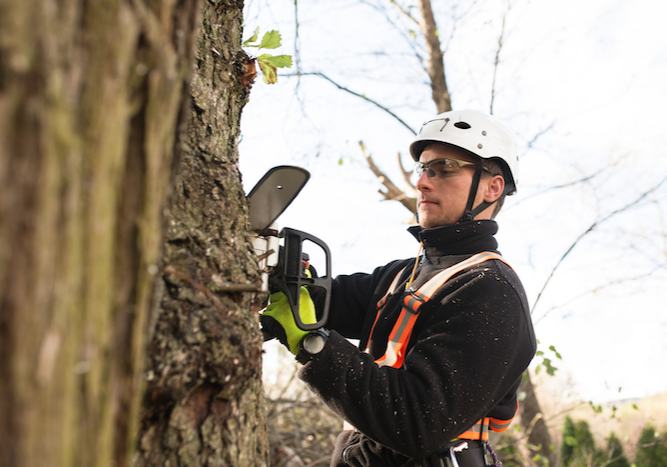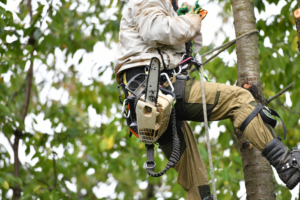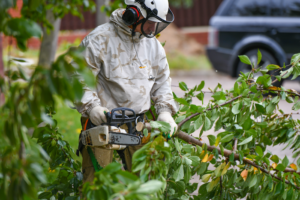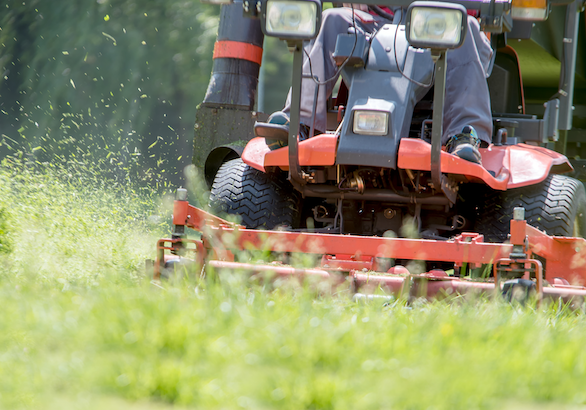How To Become An Arborist A Step-By-Step-Guide

Pursuing a career as an arborist is an exciting and rewarding choice for individuals passionate about trees, the environment, and working outdoors. Arborists play a crucial role in preserving and maintaining the health of trees, ensuring their safety, and contributing to the overall well-being of our communities. If you’re interested in pursuing a career as an arborist, this step-by-step guide will help you navigate the path to becoming a certified and skilled tree care professional.
Step 1: Understand the Role of an Arborist
Before embarking on the journey to become an arborist, it’s essential to have a clear understanding of the job responsibilities if you choose to pursue this career path. Arborists are tree care specialists who diagnose and treat tree diseases, perform tree pruning, assess overall tree health, and handle tree removal when necessary. They also provide valuable advice on tree planting, transplanting, and maintenance.
When tree health symptoms occur, arborists collect samples and test them for their cause. They then use the best possible treatment of these problems by applying specific arboricultural methods. Tree care professionals try to avoid removing trees when at all possible. The goal for arborists is to maintain, treat, and preserve tree health — removing a tree entirely is usually the last option. Arborists are also hired to remove dead trees that pose danger in regard to power and utility lines, pavements, or large road systems.
In the tree care industry, an arborist can commonly be referred to as a tree climber. Many times, an arborist is required to get up into the trees to remove dead branches or conduct tree maintenance. And they don’t literally climb trees — they are harnessed in the appropriate protective gear and use a cherry picker machine to hoist them up into the trees.
It’s also valuable to understand that businesses in the tree care industry require extensive insurance measures. Because maintaining trees often requires dangerous work, employers must provide the highest level of insurance for their arborists. As a future arborist, this is key to be aware of because this career path requires extensive safety, focus, and dedication.
Step 2: Pursue Relevant Education & Certification
A formal education is essential for careers in the tree care industry. Most arborists have a high school diploma, equivalent qualification, or a bachelor’s degree as it forms the basis for further studies and training in the arboriculture field.
Enroll in an arboriculture or an urban forestry program at a reputable college or university. Look for programs and courses accredited by organizations such as the International Society of Arboriculture (ISA). These accredited programs cover tree biology, plant pathology, pest problems, soil science, and safety procedures.
The ISA Certified Arborist credential is widely recognized by arboriculture organizations and demonstrates your commitment to excellence in the field. ISA Online Learning Center offers the ISA Certified Treekeeper® Courses as a 25 Course Package. And as a requirement for the certificate in arboreal science, you must have three years of working knowledge in tree maintenance. This field experience includes work on trees and plants; securing and growing them, pruning, fertilization, disease control, and problems associated with insects.
Step 3: Gain Experience
Hands-on experience is invaluable in the arboriculture field. Seek an internship or an entry-level job with local tree care companies, municipal arborist offices, or botanical gardens. Practical work experience will enhance your skills and general knowledge and understanding of the day-to-day tasks involved in an arboriculture job. Positions at landscaping companies or in the horticulture field can also be a great starting point.
According to the U.S. Bureau of Labor Statistics, the job market for conservation scientists and foresters is estimated to grow by four percent from 2022 to 2032. This means that there will be roughly 3,000 job openings for conservation scientists and foresters, on average each year, over the next decade.
Before jumping into practical work experience, it’s important to understand the necessary gear and tools you will need working as an arborist. Protective gear, climbing equipment, cutting and pruning tools, and rigging equipment are just a few examples. Arborists oftentimes have to utilize heavy machinery and power tools, so overall safety training is extremely important. Check out our blog post for more information, including a comprehensive list of the necessary equipment prior to gaining experience in the field.
Step 4: Advance Your Skills
Arboriculture offers various specializations, such as tree risk assessment, municipal arboriculture, and utility arboriculture. Identify your areas of interest and pursue advanced certifications to enhance your expertise and marketability within the industry. The field of arboriculture is also constantly evolving, with new research and technologies shaping tree care practices. It’s important to stay informed about industry trends, attend training workshops and online courses, and engage in continuous learning to remain a knowledgeable and skilled arborist. Continuing to advance your skills and education will allow you to increase your earning potential, and move ahead in your role, your organization, or the industry as a whole.
As a certified arborist, you will need a wide variety of work experience to be employed. Whether you build your skills and experience at private companies or public entities, the continued practice of your skills is invaluable. Once you become a master arborist and gain the skills required to perform an efficient tree care operation, you may choose to start your own tree care business, hire qualified employees, and leverage technology such as Arborgold Software to help you grow your business.
Arborgold works with many arborists and tree care organizations to provide ongoing support and education with innovative software and tailored features to support arborists. Learn more about how our technical training teams work with tree care businesses.
Step 5: Join Professional Organizations & Build Your Portfolio
Networking is crucial in any profession. Joining professional organizations like the Tree Care Industry Association (TCIA) provides opportunities to connect with other arborists, attend conferences, and access resources that can further your career.
The American Society of Consulting Arborists (ASCA) is another beneficial organization for arborists, from networking to continued knowledge and education. Arborist and tree care conferences are one of the most valuable ways to grow your professional network, and they also provide you with the opportunity to bring back best practices to your organization.
As you continue to gain experience, build a portfolio showcasing your previous jobs, current work experience, certifications, and achievements. A professional portfolio is an important tool when seeking new opportunities or advancing within your current position or company.
Make sure you also connect with relevant arboriculture and horticulture professionals on LinkedIn to continue to grow your professional network and connections. And don’t forget the importance of face-to-face meet ups with professionals in the industry. Staying top of mind with your connections in tree care is crucial for advancing your knowledge and your career as an arborist.
Step 6: Cultivate a Passion for Environmental Stewardship
Arborists are stewards of the environment. Cultivate a genuine passion for trees, conservation, and sustainable practices. Being an advocate and showing dedication for the environment not only enhances your professional reputation but also contributes to the broader goal of preserving our natural resources. Whether it’s through personal choices, volunteering, or social advocacy, your commitment to environmental stewardship can inspire others and create a collective movement toward a more sustainable future.
Education, work experience, certification, and dedication to ongoing professional development are key to becoming an arborist. By following this step-by-step guide, you’ll be well-equipped to successfully pursue a fulfilling career as an arborist, making a positive impact on the health and longevity of our environment’s trees.
Learn more about the power of Arborgold Software for arborists and tree care businesses.
Share this resource





